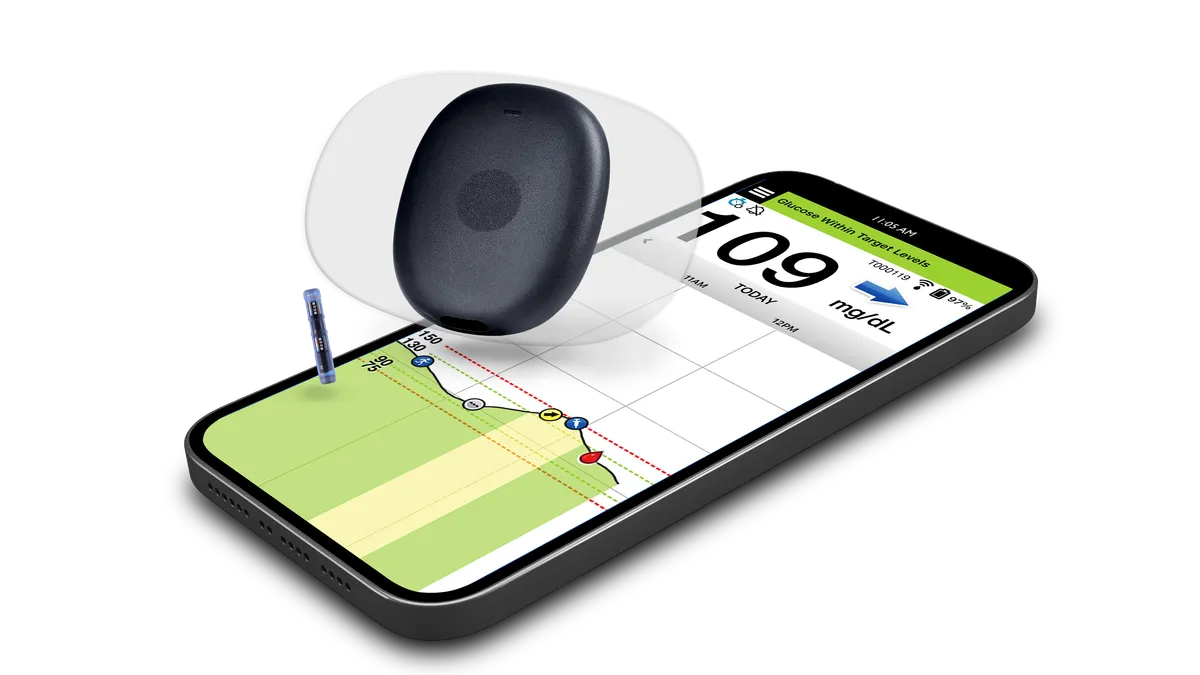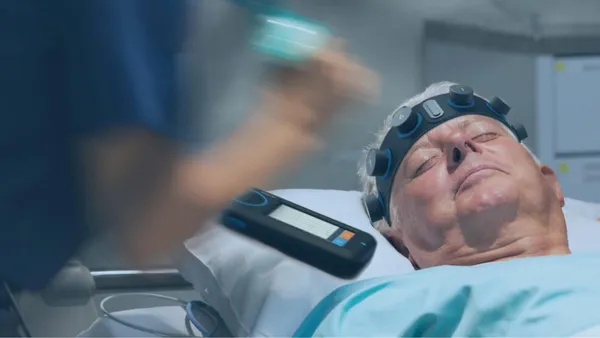Dive Brief:
- Senseonics and commercial partner Ascensia Diabetes Care received clearance from the Food and Drug Administration for the first implantable glucose sensor that can be worn for one year, doubling the wear time of Senseonics’ current sensor.
- The continuous glucose monitor (CGM), called Eversense 365, is implanted just under the skin. A removable transmitter is worn on top of the skin using adhesive. It can be used by adults with Type 1 or Type 2 diabetes.
- Eversense 365 has an integrated CGM designation, meaning it can be used as part of an automated insulin delivery system, when a CGM and insulin pump coordinate to deliver insulin when needed. The company is in partnership discussions with pump manufacturers, Ascensia President of CGM Brian Hansen said in a Tuesday announcement.
Dive Insight:
Senseonics CEO Tim Goodnow told investors in August that the clearance and launch of the yearlong sensor would be “one of the most significant catalysts in the company’s history.”
In addition to the longer wear time, the new sensor requires less frequent calibration using fingersticks; calibration is only required once per week after day 14. The current 180-day sensor must be calibrated twice daily for the first 21 days, and daily after that.
Most other CGMs on the market are worn for 10 to 14 days and need to be replaced if the sensor comes off.
Ascensia, which became the exclusive distributor of Senseonics’ Eversense CGM systems in 2020, expects to launch Eversense 365 in the fourth quarter.
Senseonics has not disclosed a sales forecast for the new sensor, but the company previously said it hopes Eversense 365 will help double its sales and user base in 2025. Senseonics reported $4.9 million in revenue in the second quarter, most of which came from sales to Ascensia.
The clearance comes amid an influx of new CGMs. Dexcom and Abbott recently started selling the first over-the-counter sensors, and Roche said it plans to debut its first CGM in Europe “in the coming weeks.”












